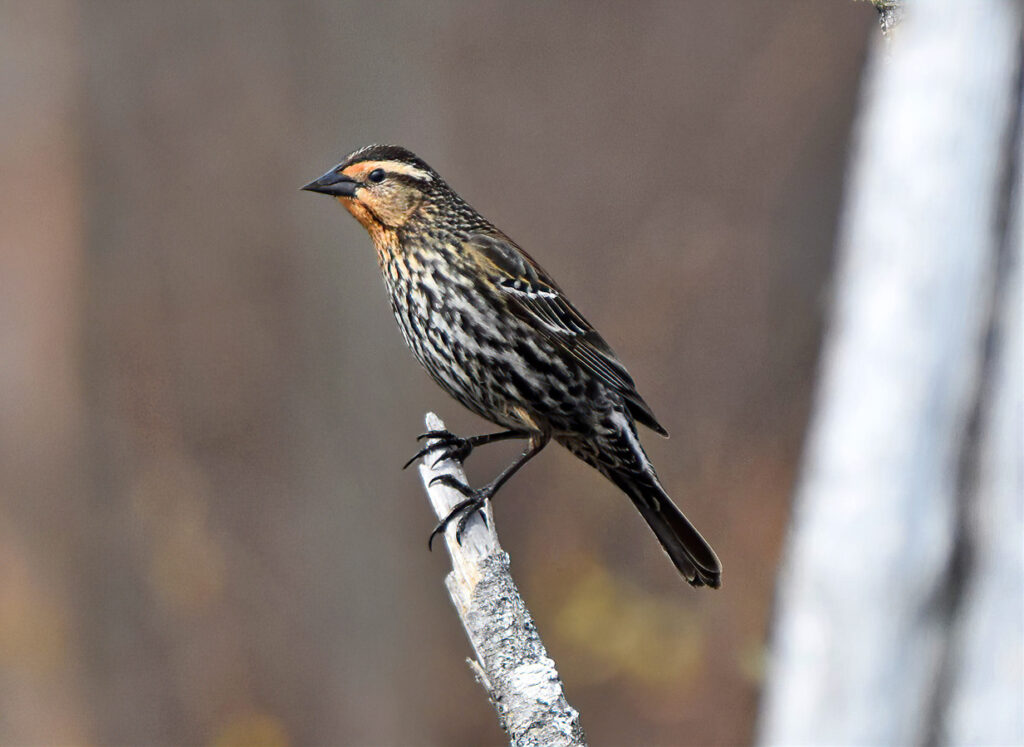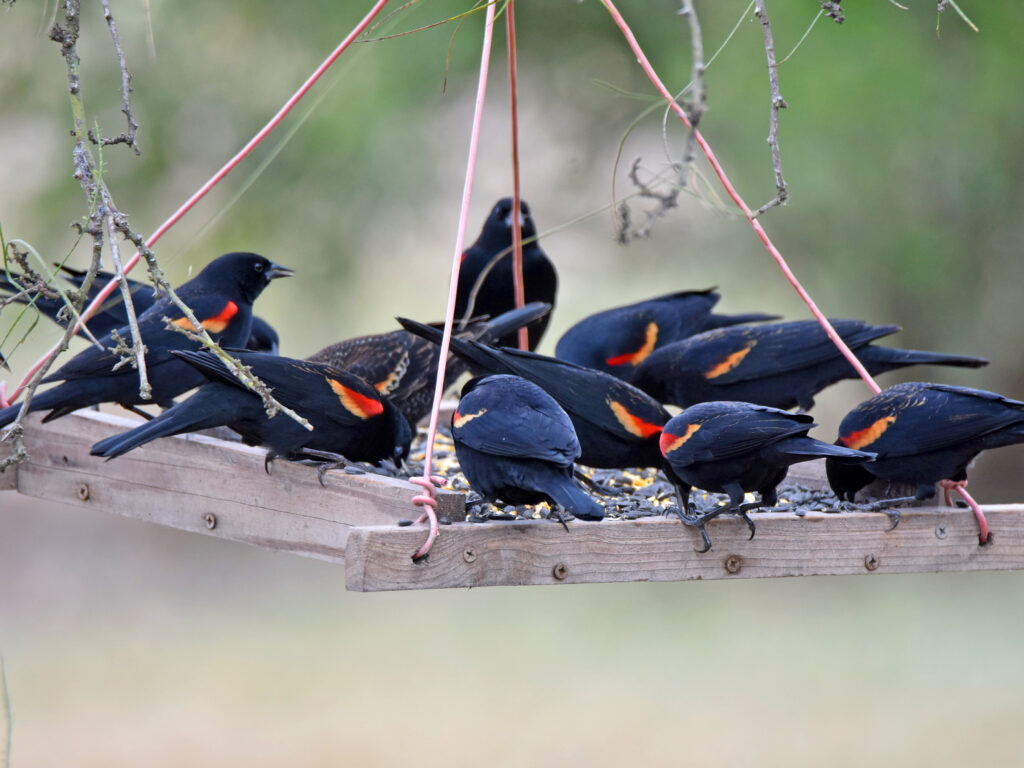
The Red-winged Blackbird (Agelaius phoeniceus) is a common passerine bird found across North America. Adult males have a total length of around 9.1-10.6 inches (23-27 cm) and a weight of 1.5-2.7 ounces (42-77 g), while females are slightly smaller, measuring about 7.9-9.8 inches (20-25 cm) in length and weighing between 1.1-1.9 ounces (32-54 g).

One of the most distinguishing field marks of the male Red-winged Blackbird is its striking red and yellow shoulder patches, called epaulets, which it displays prominently during territorial displays and courtship rituals. Females are brownish in color with streaked underparts and a whitish eyebrow. Juvenile birds resemble females, but with a darker bill and throat.
Red-winged Blackbirds are a migratory species, with populations in the northern parts of their range, including Canada and Alaska, moving south for the winter. Migration typically occurs between September and November, with birds returning to their breeding grounds in March and April. Some individuals may remain in their breeding range year-round if food and shelter are available.
Red-winged Blackbirds are commonly found in wetland habitats, such as marshes, swamps, and meadows, where they forage for insects, seeds, and other small invertebrates. They are also known to visit backyard bird feeders, particularly during the winter months when food sources may be scarce.

Despite their commonness, Red-winged Blackbirds face a variety of threats, including habitat loss, pesticides, and climate change. Nevertheless, they remain an important component of North America’s avian biodiversity and a beloved species among birdwatchers and nature enthusiasts.

